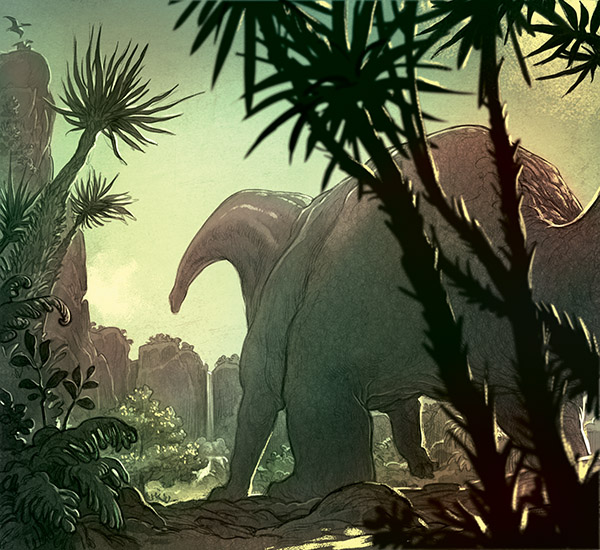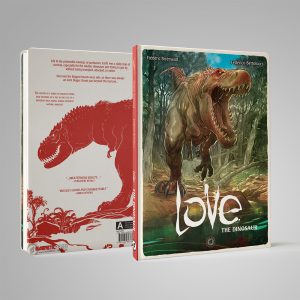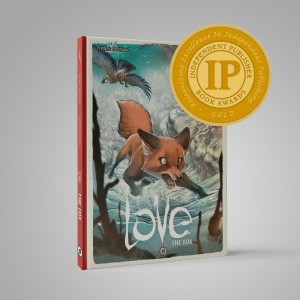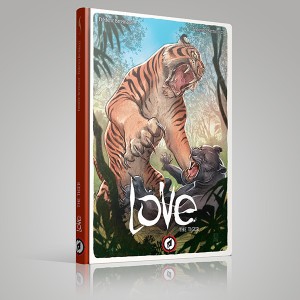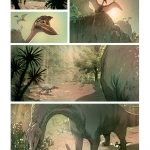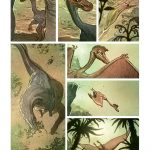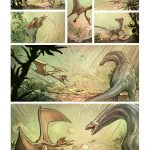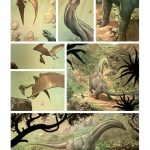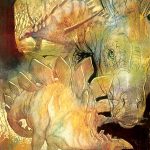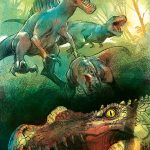How do you create compelling characters and stories when your cast is all wild animals and the whole thing is wordless?
FREDERIC: This is a very good question because Love is not a series where we just try to cover a list of animals. After The Dinosaur, we will not simply make “The Insects.” There are themes that we want to develop, and we look to nature for how to illustrate them. Whether it is normal daily survival and providing for yourself, as with The Tiger; or surviving disaster through instinct with The Fox; social inclusion with The Lion; or betrayal and persistence with The Dinosaur, animals reflect themselves on us. Many readers were surprised when we chose to present The Lion. They physically resemble felines, but only physically. I believe that the lion and the tiger have a totally opposite life. The first is social, the other not.
Of course, there is also partially a desire to illustrate an entire microcosm. Who has not dreamed of a story with clashing dinosaurs, huge trees, and flying carnivores? To write these silent stories, I talked a lot with documentary filmmakers, notably with Jacques Perrin’s team (director of OCEANS and WINGED MIGRATION). For the Love stories, as in documentaries, editing and rhythm are paramount. It is impossible to build a story based on an animal eating a mouse, then a rat, then a rabbit, and so on until the end. It is necessary to vary the scenes with contemplation, calm then action, find the right balance and ensure that the reader does not read through the story in two minutes. On the contrary, you want the reader to get lost in each panel, and forget that it is a comic book. The sounds of nature must come to mind automatically (something more difficult to achieve when there are word balloons).
Discoveries on what dinosaurs might have looked like are rapidly evolving. How did you decide how to visualize the extinct creatures in Love: The Dinosaur?
FEDERICO: I tried to represent the dinosaurs according to the latest theories that scientists have proposed, especially considering that their direct relationship with the birds of this was definitely something concrete.
What are some of your favorite depictions of dinosaurs in other media?
FEDERICO: Surely the cinema, with Jurassic Park, has marked our imagination and given us really striking images, but also many BBC documentaries, made with the latest technologies of computer graphics, have made the world of the past within the reach of the general public. My favorite dinosaurs, however, are always the ones designed by Bill Watterson in his comic strip Calvin and Hobbes.
Why is the series named “Love”? What does that mean to you, in this context?
FREDERIC: Love, in our series, has a global meaning, even divine. It belongs to a world where all elements have a place. A great whole, which man does not often perceive, and often unintentionally destroys. At the beginning of each book, we find it important to remember this definition:
“In the animal kingdom, animals neither love nor hate each other. Love and hate are parts of a natural whole. A supreme balance many consider to be universal, or even divine. an elemental love. A Love that mankind could never experience.”
LOVE: The Dinosaur is available now in the Magnetic Press store.


